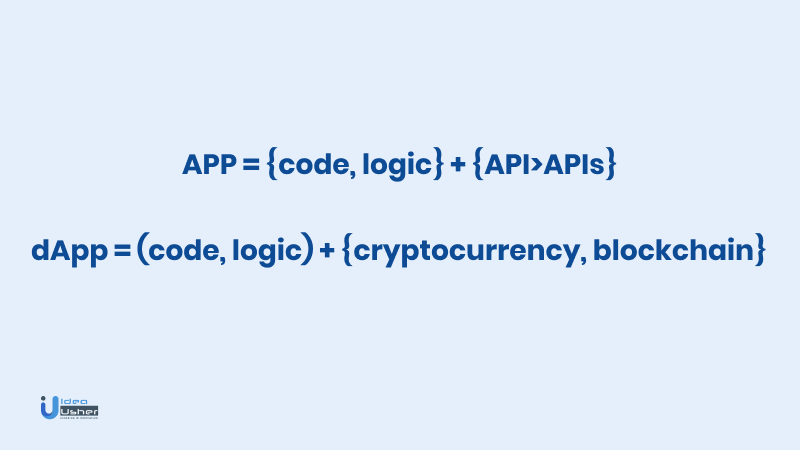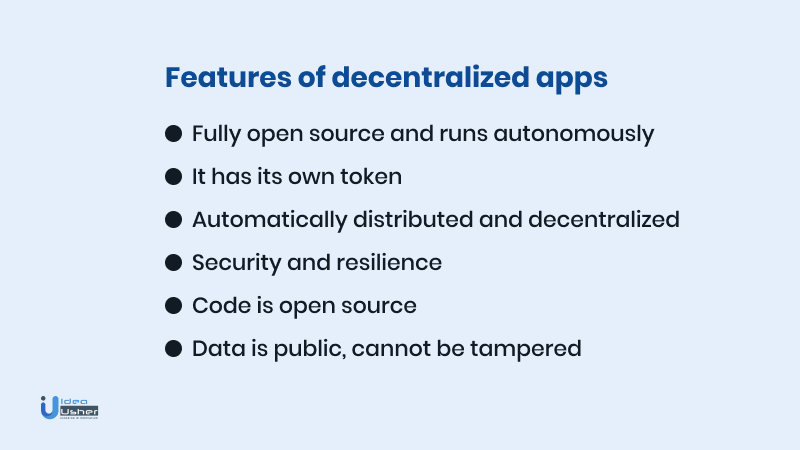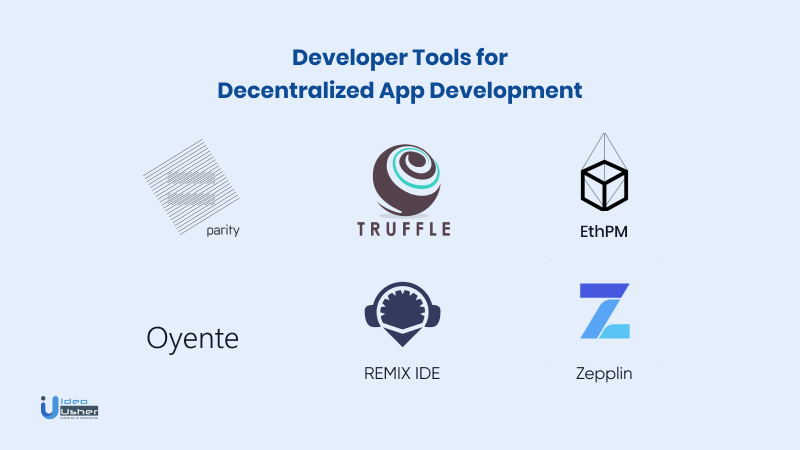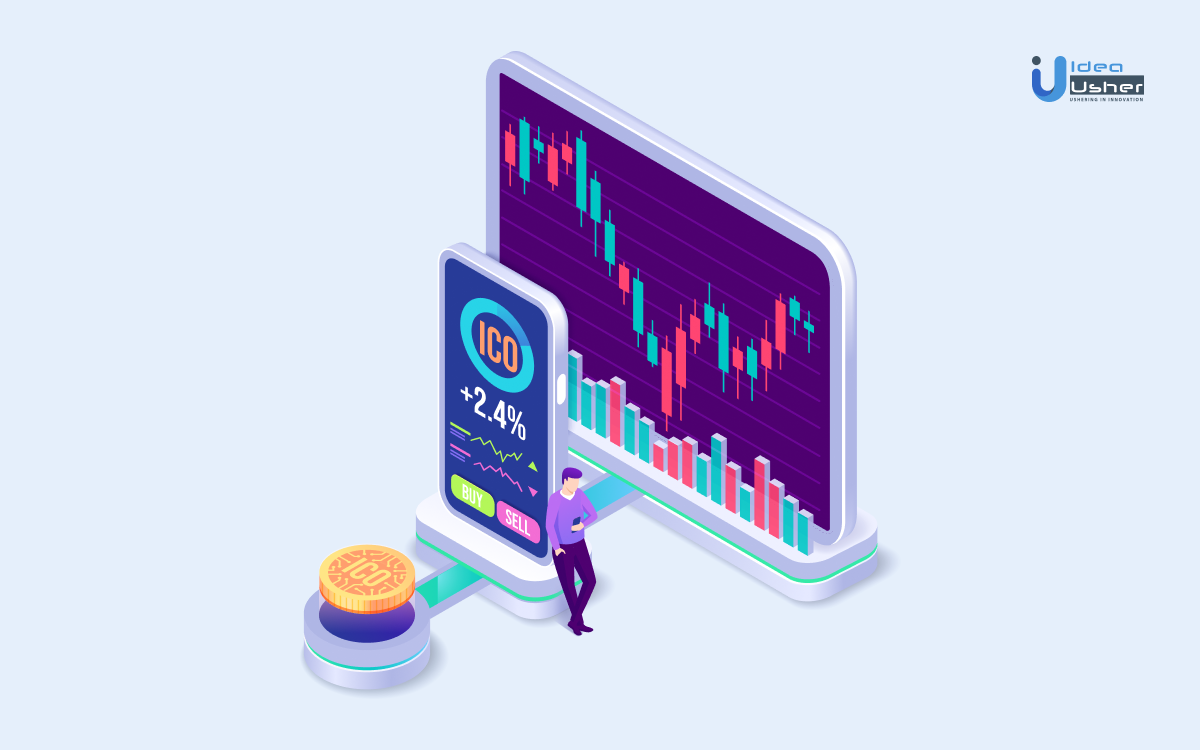What does decentralized app development mean?
Decentralized app development (DApps) does not rely on a centralized services provider like Google or Apple. Apps are built on blockchain technology. Therefore, it gives the application the benefits of openness and transparency without giving up control to third-party servers. This makes decentralized apps better at solving some problems that centralized apps face. In this article, you’ll learn about decentralized application development. By the end, you’ll learn how DApps can offer better advantages than traditional apps.
- The most prominent applications that have been created using this technology are cryptocurrencies. Several other types of applications are being developed every day.
- Decentralized applications are web applications normally built on top of the blockchain. That means it’s usually decentralized and open source.
- DApps also run on a peer-to-peer network instead of a centralized server.
What is the difference between the traditional APP and dApp?

There are two types of chains: APP and dApp. If you are a crypto-enthusiast or just coming into space for the first time, chances are you have seen both terms thrown around a lot. So what is the difference between both of these chains? And which one is better suited to your needs? The biggest difference between a dApp and an APP is their underlying technology, which is mainly used to connect with blockchain.
APP = {code, logic} + {API>APIs}
dApp = (code, logic) + {cryptocurrency, blockchain}
| v/s | APP | dApp |
| Terminology | APP is a term used for an application | dApp for a decentralized application |
| Software | APP refers to the software that runs on the server, which controls data and applications while leaving all the data on the chain | dApp refers to software whose back end does not control or store any user’s data |
| Verifies and executes commands by the users? | No | Yes |
| Build | Centralized | Blockchain, peer-to-peer systems |
| Coins fungibility | No | Yes |
| Central point system | The APP allows others to access their service | Have no central connection point with other organizations |
| Coding language | Follows native coding language of the mobile platform and requires the support of app store to operate normally | No native requirement runs on their own network independently |
How does a decentralized app work? (P2P model)
A decentralized application works through peer-to-peer technology. So there is no central location or server to store data.
To understand this, let’s understand P2P first. The P2P model is short for peer-to-peer networks. It is an alternative business model that allows people to do business directly with each other. Ultimately, it eliminates the use of third-party apps.
Did you know?
The most common type of P2P model online businesses use is the ad exchange model.
A P2P (peer-to-peer) network is one where the computers in the network directly interact with each other. It is in contrast to a client-server model that is common on the web. PCs have been using P2P networks for collaborative activities since the invention of the internet. Moreover, if you use BitTorrent to download something, you are already using P2P technology.
What are the advantages of decentralized apps?
Only 2% of apps are decentralized. This is the future of the Internet!
DApps are still as hot as ever and are becoming widely popular. After all, they offer unique advantages over any traditional centralized applications.
1. Fully open source and runs autonomously
Its data is stored on a blockchain, incentivized in the form of cryptographic tokens & is run by a network of computers (nodes) rather than one central authority.
2. It has its own token
With the inception of Ethereum, a whole new thing is happening in the field of blockchain. One of its most important features is that it allows the use of ‘tokens’. Hence, opening new doors for crowdfunding and longevity.
3. DApp can be hosted on decentralized networks like Ethereum, Waves, Lisk, etc
The main benefit of hosting your DApp on a decentralized network is security. Besides, you don’t have to worry about the performance aspect of your app.
4. DApps-built for everyone
It is possible to build applications on top of blockchain technology. Still, many users struggle when they want to use different service providers. Hence, platforms for Blockchain apps are built with a varied audience in mind. It results in a community that is not as close-knit as the App community. Last but not least, these major platforms are hungry for new DApps. So you will have much better chances of success if you choose them.
5. Security and resilience
DApps usually have a much greater focus on security than their centralized counterparts. Because dApps are not built on a single server, they remain operational even if some nodes go offline. The process is called decentralization, and it’s one of blockchain technology’s greatest features.
6. Automatically distributed and decentralized
The most significant advantage is that decentralized apps are distributed without the need for a central server. The DApp will be running on the collective of devices connected to the network, which means that no single entity can take control of it.
They take power away from a single entity and put it back in control of the people. These applications can’t be taken down because there are no servers. And they can’t be censored because they’re owned by everyone, meaning no one entity controls the app. On top of all that, these apps run on blockchain technology. And they aren’t owned by a single company but rather by a network of peers who access and use them at any time.
7. Code is open source
Code is open-source, which means anyone can see how the code works. There’s no central point of control over decentralized apps. Clearly, it makes them resistant to censorship as there’s no way for a single entity to “shut it down.”
8. Funded and governed by DAO (Decentralized Autonomous organizations)
By definition, a DAO is an organization that works in the same way as cryptocurrencies like Bitcoin. The main difference is that instead of having a central entity in charge of the assets, decisions, and allocations are made using smart contracts.
It means that transactions will be executed without the need for an intermediary. An intermediary here means banks or other trusted institutions. In addition, these processes are all transparent. Thanks to blockchain, that validates everything as it happens.
9. Data is public and cannot be tampered with or destroyed because multiple nodes validate it, and the ledger is distributed over
At its most basic level, a blockchain is a tool for building trust in societies and organizations that traditionally have large, centralized institutions that operate on trust. Assets can be held in digital wallets on the ledger. And also exchanged in transactions that are validated by all of the ledgers running the same software. Undoubtedly it allows people who don’t know each other to trust that they both hold value.
In a nutshell, DApps is a method of making apps more secure and reliable. Think of a system with no central point of failure (like a server) that increases transparency and even allows you to profit from your data! Sounds exciting, right?

How to build a decentralized application?
Building a DApp sounds like a tough and complicated thing to do. That’s why only a few organizations or experts are able to build it. You need to have the right skill and tools to build it. Idea Usher dApp app developers can help you with it too!
Here is a brief guide:
Step 1: Develop a preliminary technical overview of the DApp
The first step in the DApp development process is to develop a preliminary technical overview. This task applies to most technologies used for software development. The next steps are to select the best programming paradigm, create a concept of the front-end interface, and determine requirements for data management.
Step 2: Assess the technological feasibility
Understand the nature of decentralization and pick a suitable platform. Then, your team must assess the technological feasibility of decentralizing your app’s core processes.
Doing so would involve determining whether or not the critical data store and messaging capabilities are implemented on a blockchain. If they are not, then you will have to determine if those capabilities can be added in some fashion. However, if those capabilities already exist, then you must conduct some risk analysis.
- How risky is it to decentralize them?
- What might happen if a hacker breaks into the system and deletes all data?
Step 3: Make sure that you use open-source tools to build your DApp
Projects like TRON and EOS are creating a lot of buzzes, with teams and developers hailing it as the blockchain platform that will usher in the “Web 3.0” era. In the same way that modern web applications employ open-source technologies to make development processes more agile, developers looking to build DApps using Web 2.0 frameworks need to make sure that they are compatible with projects like TRON and EOS, and other marketplace platforms.
Step 4: Choose the right programming language
Since the beginning of blockchain technology, its applications have been distributed and decentralized. And in order to implement these applications, we need to choose programming languages that are suitable for these applications.

Programming languages for Decentralized App Development are: |
|
| Solidity | Solidity is a programming language for writing smart contracts with a syntax similar to that of JavaScript and is designed to target the Ethereum Virtual Machine (EVM). It is a contract-oriented programming language for executing smart contracts on Ethereum Virtual Machine. It is statically typed and supports inheritance, libraries, and complex user-defined types, among other programming paradigms. |
| Vyper | For the DApp developers out there that prefer a language that resembles Python or JavaScript, use Vyper. Vyper is a fork of Python and aims to provide the same level of prolific functionality found by using Python and Solidity. In addition to functioning as a programming language, Vyper also works as an environment for writing smart contracts. Is it typically on various platforms such as OP Codes and Bitcoin? |
Now let’s take a look at developer tools that are helpful.

Developer Tools for Decentralized App Development are: |
|
| Parity | Parity is a powerful Ethereum client built in Rust. This means that, among other features, it is very performant and lightweight. Developed and maintained by the Parity Technologies company, it has emerged as one of the most popular Ethereum clients for enterprise users. |
| Truffle | Truffle is a development environment, testing framework, and asset pipeline for Ethereum. It was developed with the goal of creating the most developer-friendly framework possible. Truffle can be used for both the development and deployment of dApps. |
| EthPM | EthPM is the primary package manager for the Ethereum ecosystem. Creating an open market for reusable code allows you to discover, share, and reuse packages of software that implement common patterns and workflows. EthPM also provides a centralized host of package metadata and artifact archives. |
| Oyente | Oyente is an open-source symbolic execution tool for Ethereum contracts. It analyzes EVM bytecode and detects vulnerabilities such as stack/storage/call-stack overflows, integer overflows, unreachable code, and others. Oyente has already detected over 150,000 vulnerabilities in the past year in the manner alone. |
| Remix | Remix is the most well-known and commonly used IDE for Solidity. It’s a browser-based tool with a clean UI that facilitates you in writing your smart contracts. In Remix, not only do you get syntax highlighting, autocomplete, and debug tooling, but also a deployment environment so that anything you write and compile will be deployed immediately to your chosen Ropsten testnet. |
| Zepplin | It allows the use of module patterns and dependency injection and integrates with a wide variety of tools to allow for easy development and deployment. |
Having clarity about the best-decentralized app development tools and languages will save you precious time. Here’s the fun part, if you can’t code, you can still launch your app. And, by outsourcing your projects to Idea Usher, you will save both time and money.

Step 5: Create the smart contract and front-end component with clear documentation
The DApp, as of now, is not considered a smart contract but a combination of front-end and back-end. The current development is done in conjunction with the front-end UI and the back-end data service.
The smart contract will be responsible for storing, sending, and receiving Ether tokens for the end user. In this part, we will create an Ethereum smart contract and connect it with ReactJS front-end components.
Step 6: Use blockchain builder kits to split off the core logic of your DApp
The smart contract can be simple or complex. But if you are looking to create a complex smart contract, the chances are that you will need to have your own programming language. We don’t want lines of code in our smart contracts. To solve this problem, we can use the blockchain builder kits, an off-the-shelf code for writing smart contracts on the Ethereum blockchain.
Splitting off the core logic of your DApp will leave you with two main branches: front end and core. And there are many cases where it is preferable to use a separate technology stack for both.
Step 7: Set up a web design for your DApp to optimize conversions and marketing efforts
As with any market, the early birds get the worm. One of the most important parts of a successful DApp is user acquisition. Any successful dapp will have a user base that consists of other users who are interacting with the product on a daily basis.
If you plan on building a dapp, it is very important that you have a solid web design and marketing plan in place. This will not only help you develop a successful dapp, but it will also help you market and get your DApp out to the mainstream public.
Fret not if you don’t understand which plan or design would work best for you! You can refer to these user-interfaces for inspiration. Alternatively, you can connect with our UI/UX specialists for a free audit of your app design.
How many DApps are there in 2021?
It’s a bold prediction, but we’re going to go ahead and make it.
| By the end of 2021, we estimate that there will be more than 100K dApps built on top of Ethereum or other major blockchain protocols. Share on X |
As of July 2018, over 500 DApps have been created, with 2656 contracts created! Moreover, Ethereum cryptocurrency has the most decentralized apps.
The best 10 decentralized apps, tools, and projects of the decade

| Name | Category | About |
| Aragon | Decentralized Businesses | Do you want to create and manage a company online without registering the company? The Aragon app is doing just that. It provides a platform for startups to build their company, fund it with an ICO and manage the company by using a DApp. |
| DecentBet | Smart Contracts Casino | DecentBet is a decentralized casino gaming application. It features an internal cryptocurrency called DBET. With it, you can bet on major worldwide sports events. Also, it comes with full transparency and 0% edge. |
| CryptoKitties | Collectibles | CryptoKitties is a game centered around collecting new digital creatures called kitties. Each cat is genetically unique and one-of-a-kind, as it has its own set of attributes. |
| Ether Cartel | Build A Car Dealer Business | The Ether Cartel app is for dealers who are looking forward to selling their cars through Ethereum Blockchain. It also helps in fastening the processes of buying, selling, and trading cars. |
| Ethlance | Job Marketplace | Ethlance is a place where employers and freelancers can look for each other in order to get the job done. |
| Augur | Prediction Markets | The Augur prediction market helps to forecast the likelihood of an event occurring based on the financial rewards offered for the correct answers. |
| Basic Attention Token | Ad-Free Browsing | The BAT is designed for use specifically in the Brave browser, where you can use it to contribute money to your preferred publisher. But what the Basic Attention Token brings to the table goes far beyond that — its goal is to transform social media and digital advertising into a more efficient ecosystem for all parties involved. |
| Kik Messenger | Chat | The idea behind the app is very simple, but it works very well. It allows you to send and receive end-to-end encrypted messages with other people around the world. |
| Substratum | Open source internet | The Substratum Network is a worldwide collection of nodes that securely deliver content without the need for a centralized server. You can use the Substratum login and pay with tokens anywhere. Dapps have its own token systems, so anyone can monetize their web-based application by running it through the Substratum Network. |
| Hydro | Decentralized currency | Hydro has set out to revolutionize online payment processing by solving the challenges of “Speed” and “Cost.” Also, it offers instant transactions at virtually no cost and with high speed to provide scalable DApps on the blockchain. By providing all functionality needed for a user-friendly cryptocurrency payment experience, Hydro is building a fertile ecosystem for further decentralized projects and solutions. |
The best industries for DApps development
- The Best Decentralized Apps
- Finance
- Communication
- Entertainment
- Productivity
- Casino and Gambling
- Sports
- Social Networks
- Cryptocurrency
- Digital Identity
Idea Usher app developers’ takeaway on DApps
Decentralized app development on Blockchain is rapidly growing. It is because of the appeal it has for new businesses, like startups. Many people choose decentralized apps because they offer a new way to create applications. Instead of centralizing the creation of apps in one group, open-source software makes the process accessible to everyone.
We provide the tools and infrastructure to create Decentralized Apps that run on Ethereum, Bitcoin, Byteball, or any custom blockchain.
Traditional centralized app development is hard and expensive.
Decentralized app development follows the blockchain paradigm. The company builds an app on open-source software and distributes its own tokens to consumers as compensation for using the app. Hence, Blockchain tech can easily be applied to industries to provide transparency for all participants.
With our expertise and open-source developers, we enable quick and cost-efficiently development of decentralized apps in any field – be it health or insurance, financial services, or social media networks. Contact us for a free consultation today!
Build Better Solutions With Idea Usher
Professionals
Projects
Frequently asked questions on decentralized app development (FAQs)
Q: When did DApps come into existence?
A: Decentralized app development, or DApps, was first used in 2013 on a decentralized financial platform. The goal is to build apps that are like what we call ‘thin’ clients. These thin clients require third parties or centralization. It essentially limits the benefits of blockchain and cryptocurrency. Decentralized app development is about avoiding using these central services to create open-source, secure applications that do not rely on one centralized provider.
Q: Is dApps legal?
A: YES. One thing we know for sure is that the blockchain tech business has peaked our interest. It’s so new, yet its possibilities seem overwhelming. There are nearly endless ways in which this technology can evolve, and it all looks shiny and promising. The only thing that seems to be missing is, however, a guarantee that it’s legal.
Q: Can you make money with dApps?
A: YES. The crypto market and the crypto-collectibles craze saw huge success in 2018. Therefore, more developers and entrepreneurs have started to create their own decentralized apps. A growing number of these dApps are using blockchain technology to directly monetize their apps. It is an approach that was previously confined to cryptocurrencies.
Q: What is the dApps rule?
A: The rule states that you need to have a product and test out the market before finding a product. This means that the app must not be under development before getting the funding for its production. Violating this rule is penalized by restricting applications or grabbing their money back.




















